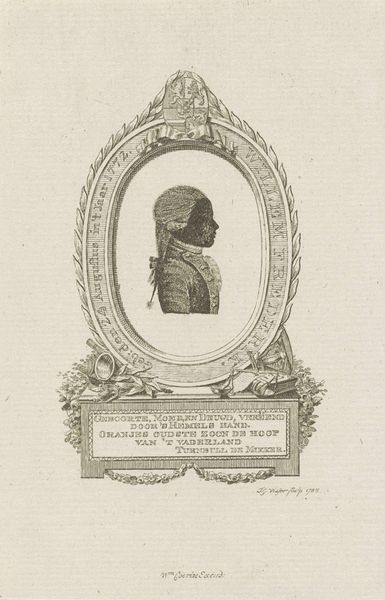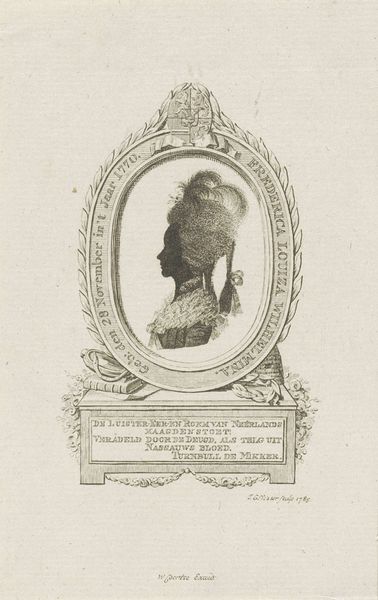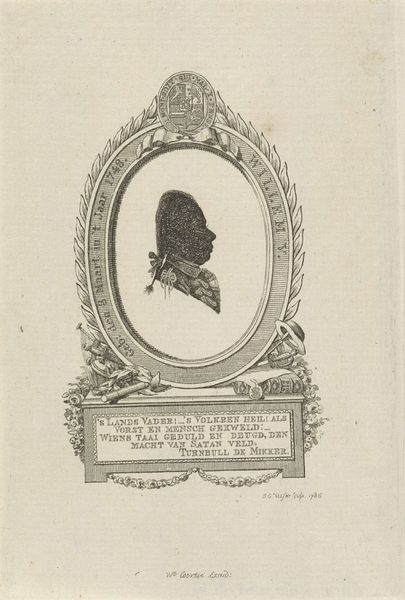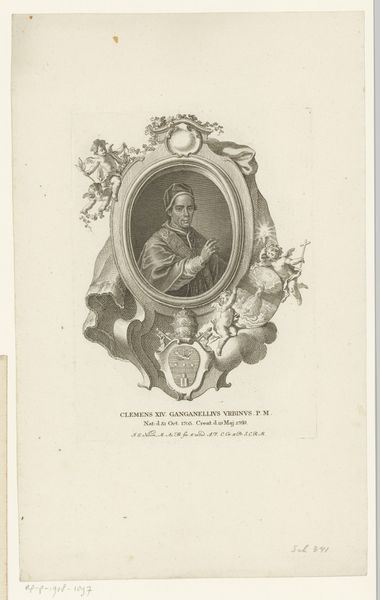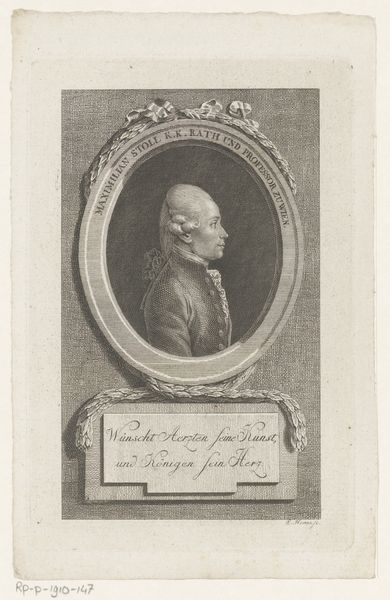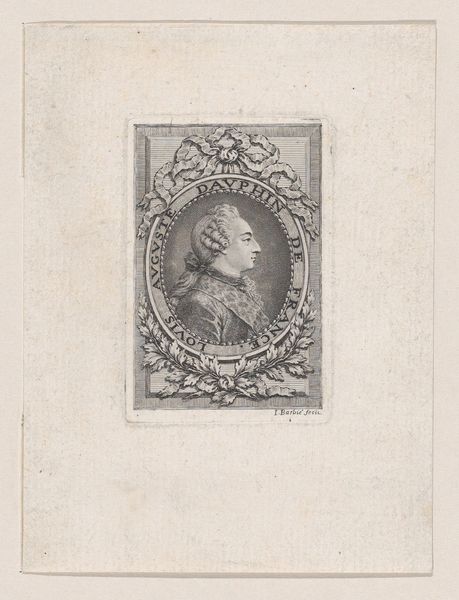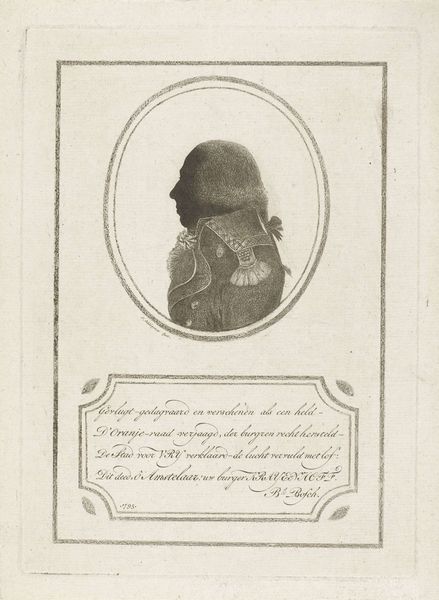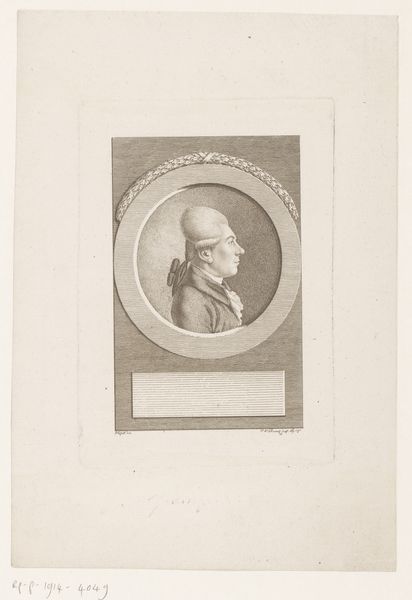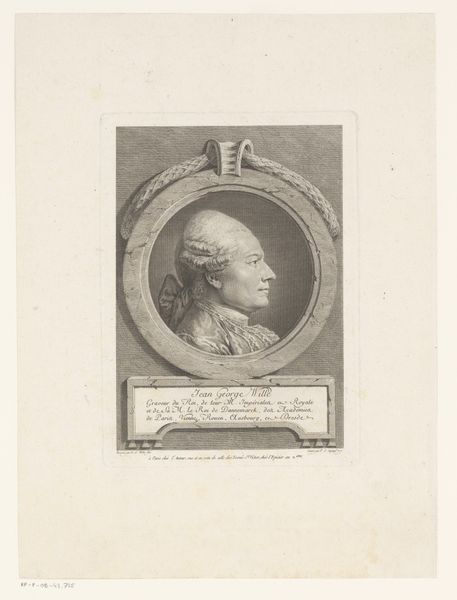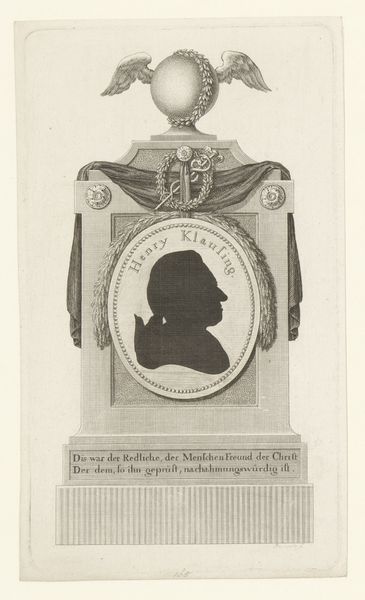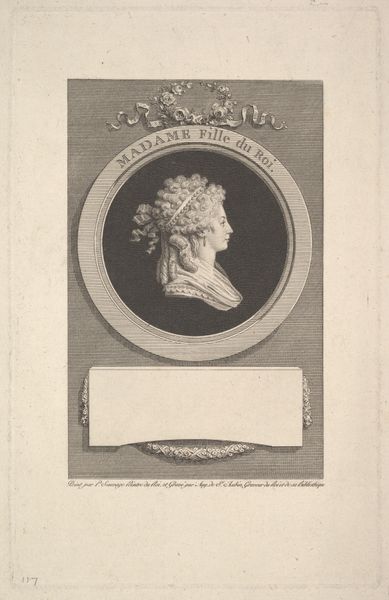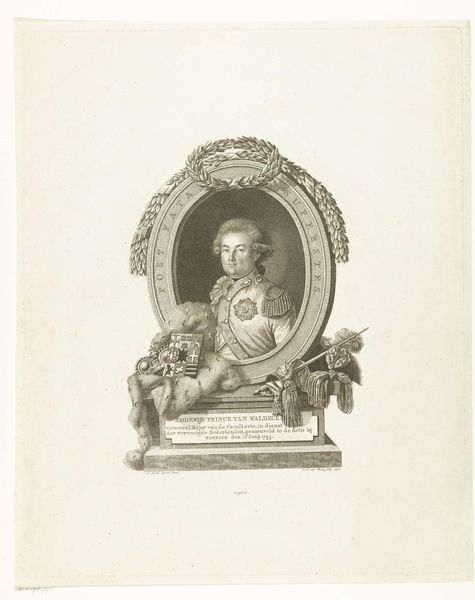
graphic-art, print, engraving
#
portrait
#
graphic-art
#
neoclacissism
# print
#
old engraving style
#
15_18th-century
#
engraving
Dimensions: height 151 mm, width 94 mm
Copyright: Rijks Museum: Open Domain
Curator: Standing before us is an engraving from 1786, "Silhouetportret van Frederik, prins van Oranje-Nassau" by Jan Gerritsz. Visser. Editor: It’s striking, this stark black silhouette encased in that decorative oval. Almost unsettling, in its bold simplicity against the intricate border. Curator: The silhouette portrait became popular in the late 18th century as a relatively inexpensive way to depict a person. Consider the broader context. Neoclassicism valued simplicity and order. The silhouette embodies these principles perfectly. The use of black and white underscores this clean, unadorned aesthetic. Editor: Indeed. The choice of engraving, a replicable medium, points to wider dissemination, a deliberate act of image distribution and therefore some measure of propaganda. We're talking about a young prince, after all. I am curious about the material implications of widespread printing techniques and who benefits from those industries. Curator: Precisely! Think about the symbolic weight. The choice of a silhouette avoids direct representation of features, crafting a persona centered on status. The Oranje-Nassau crest in the frame and elaborate presentation beneath assert the power and lineage tied to Prince Frederik. It speaks volumes about the culture of nobility and the representation thereof. Editor: But how does the process influence reception? Consider that the flatness inherent in engraving allows for an emphasis on line and contour. Is it a reduction of a person to simple shape, or rather, an extraction of their pure essence into a tangible product that bolsters the Royal Brand? What do you think that says about how people might perceive both prince and political regime at the time? Curator: That's a fascinating point. While the portrait itself doesn't reveal overt political messaging, the intent to project an image of unwavering strength and aristocratic bearing is clear. Editor: Overall, it's more than just paper and ink. The combination of process, image, and intent shows how visual culture can shape public perceptions of power. Curator: An insightful reminder to look beyond mere aesthetics and contemplate the deeper socio-political currents at play.
Comments
No comments
Be the first to comment and join the conversation on the ultimate creative platform.
